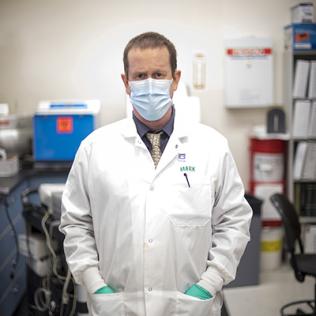
On the Cover
Multi-Nucleated Muscle Cells Grown in Culture. The cells have fused together to form myotubes that have many nuclei (stained blue). The cells are from mouse skeletal muscle stem cells treated with a harmless virus that caused them to glow green. The green color remained when the stem cells fused into myotubes. Some myotubes are stained red for a protein involved in muscle contraction (myosin heavy chain), a characteristic of mature muscle fibers. Researchers plan to use the same viral delivery system to genetically modify the cells and assess how impairing cell fusion alters myotube growth. The image was a 2017 winner in the BioArt competition of FASEB.
KEVIN A. MURACH, UNIVERSITY OF KENTUCKY, WITH SUPPORT FROM NIAMS, NIA





